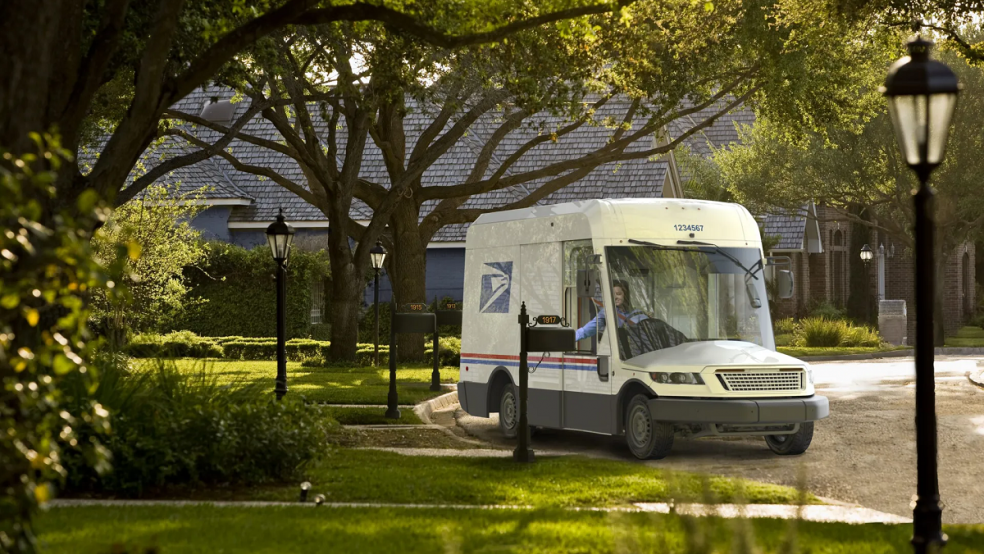The U.S. Postal Service announced Tuesday that it plans to purchase 66,000 electric vehicles for its delivery fleet as part of $9.6 billion modernization effort over the next five years.
The new plan calls for buying 45,0000 electric "Next Generation Delivery Vehicles" (NGDV) built by Wisconsin-based Oshkosh, plus 21,000 electric vehicles of various designs from other automakers, as well as necessary infrastructure. The USPS will also purchase 15,000 gas-powered NGDVs and 25,000 conventional trucks, but all new postal vehicles will be electric starting in 2026.
The announcement marks a shift in the strategy previously announced by Postmaster General Louis DeJoy, a Trump appointee who said last year that he planned to purchase mostly gas-powered trucks to replace the mail service’s aging fleet of more than 200,000 vehicles. DeJoy said the funds provided to the post office in the Inflation Reduction Act – $1.3 billion for electric delivery vehicles and $1.7 billion for charging infrastructure – played a key role in formulating the new plan, as did improving finances at the USPS.
“The $3 billion provided by Congress has significantly reduced the risk associated with accelerating the implementation of a nationwide infrastructure necessary to electrify our delivery fleet,” DeJoy said in a statement. “While most of the electric vehicle funding will continue to come from Postal Service revenues, we are grateful for the confidence that Congress and the Administration have placed in us to build and acquire what has the potential to become the largest electric vehicle fleet in the nation.”
John Podesta, the White House adviser for clean energy innovation who played a key role in developing the plan, said the expanding fleet of electric vehicles could help spur wider adaptation of the technology. “It will get people thinking, ‘If the postal worker delivering our Christmas presents … is driving an EV, I can drive one, too,’” he said.




